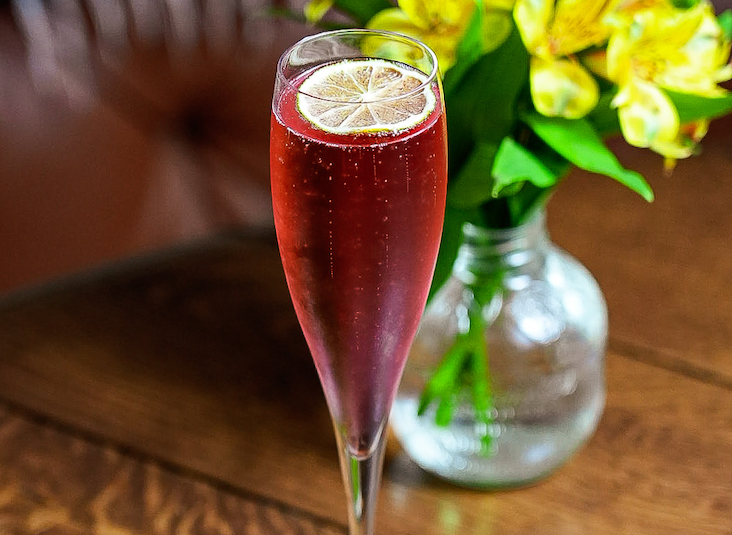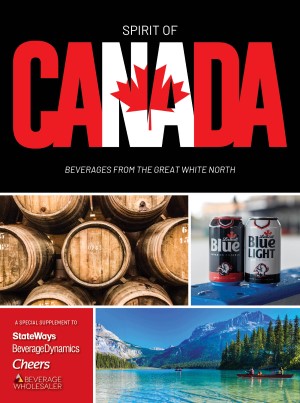Has the fortune of any spirit been more closely tied to its outreach to the restaurants and bar community than tequila?
Take the flight phenomenon. While a handful of bars that focus on single malt Scotch offer customers the chance to order a trio of various whiskies in one go, it’s not a common occurrence. Likewise, there are plenty of operators that gather large selections of brandies and rums, but the flight concept never really has caught on with them.
Tequila does not suffer this problem—from vertical tastings from a single distiller to groupings by age or region, tequila flights barely raise eyebrows these days.
Distiller dinners are another example. When a rum maker or a vodka producer comes to a city with a dining and drinking story to tell, it can be cause for news. But every day, it seems, tequila producers send their reps out on the road to host special spirit, cocktail and food pairings that routinely sell out.
These are just two of the innovative ways operators are marketing and selling tequila, leading the way for the category by educating consumers and generating excitement for the Mexican spirit.
Their work is paying off: Most leading tequila brands grew last year, according to Cheers parent The Beverage Information Group (BIG). Category leader Jose Cuervo inched up 0.2 percent, Patrón shot up 5.8 percent, Sauza grew 1.8 percent, Juarez was up a blazing 14.5 percent and 1800 grew more than 20 percent. The top 10 tequila brands grew 4 percent by volume last year, with the category as a whole up 3.8 percent.
Many suppliers also have been focusing on new iterations that offer operators greater diversity: Cuervo now offers the mixto Jose Cuervo Especial Silver; Milagro has advanced its second line of Select Barrel Reserve tequilas and Proximo recently introduced Gran Centenario Rosangel, a 100 percent agave reposado tequila finished in port pipes and infused with hibiscus flowers.
Quality Rising
While the association with bad collegiate behavior still lingers on some level, tequila’s reputation as a quality spirit now is well established for the most part. According to the most recent statistics from the Washington, D.C.-based Distilled Spirits Council of the United States, tequila exploded last year at the highest price points, with volume up among super-premium spirits by 10.6 percent. Value-priced tequilas also were up, gaining 6.4 percent by volume in 2008, while premium, the largest category, sank 1.3 percent and high-end premium dropped by 9.2 percent.
But it wasn’t always this way. “It’s amazing to see how quickly things have changed,” says David Suro, owner of Tequilas, a Philadelphia bar that has been providing quality tequila for more than 23 years. It was “a spirit that was considered sort of dangerous, and now it’s become [one of] the fastest growing spirits in the U.S.” He shakes his head when he remembers the difference between the tequila collection when he started the bar and the 105 pure-agave tequilas he carries today.
“I had access to only five tequilas that I thought were drinkable when I opened; it was so bad during those years, I switched from being a tequila drinker to a Scotch drinker,” he says. “You can’t even imagine what it was like then.” Today, Tequila’s selection ranges in price from $7.50 for 1800, Hornitos and Cuervo Tradicional Reposados to $100 for Gran Patrón Burdeos, which is finished in Bordeaux wine barrels.
Doing business in Pennsylvania, where the state strictly controls entry, made it harder for Suro to get quality brands. But the point is well taken: Tequila has come a long way. Nowhere is the importance of 100 percent blue agave tequila more obvious than with the continuing growth of Patrón; its entire product line is made from 100 percent agave.
In fact, many operators like Suro carry only 100 percent agave tequilas. There are two basic types of tequila: those made entirely from agave, and mixto tequila, produced from a mix of 51 percent agave and other sugars. Tres Agaves in San Francisco stocks about 100 offerings of pure-agave tequilas, limited to 30 brands in the three major age ranges. As with Philly’s Tequilas, Tres Agaves also holds monthly distillery dinners that are hosted by a distiller or brand ambassador, with mariachi musicians, a special menu and both cocktail and flight pairings. The dinners cost $75 per person and include tip, tax and tequila.
Tres Agaves also boosts sales with a passport marketing program that allows them to ramp up the informational aspect of selling tequila. “Anything we do is about furthering our mission to educate people about 100 percent agave tequila,” says managing partner Eric Rubin. Customers get their Tres Agaves “passports” stamped with each variety they sample, and guests who fill their book have a chance to win a free distillery dinner or other gifts.
To bolster staff training, management also regularly takes servers to Mexico on distillery trips; the restaurant has logged 75 unique staff visits in the past three and a half years.
Staff training and customer education works wonders, says Suro, who hosts a monthly dinner and seminar that pairs tequila—both neat and in cocktails—with food. They focus on the history, geography and terroir of the spirit, he says. He also holds a monthly late-night tasting that features six brands. During these tastings, he passes around a tray of herbs, spices and fruits that, according to each producer, tasters might encounter in the products. Limited to about 18 people, these events sell out fairly quickly and cost $45 per person.
More Than Frozen Margaritas
Tastings are one way to sell tequila, but it’s long been the Margarita, America’s favorite cocktail, that has driven the spirit’s success.
In New York City, Toloache chef and owner Julian Medina took a hands-on approach and developed the half dozen or so recipes for the restaurant’s various Margaritas. Like guests at many other authentic Mexican restaurants, Toloache’s customers seem to be passing on the old standby, the frozen Margarita.
“I thought we’d sell more frozen Margaritas then we do, but the number one seller is the Toloache,” he says, a $12 signature drink made with Frida Kahlo Blanco, hibiscus, blueberries and lime. A shaken, $10 house-made Margarita with El Jimador is the second largest seller, and all are made with agave nectar, an ingredient popular in cutting-edge cocktail programs.
Some of Medina’s other creations are proving to be successful, as well. “I’ve been trying to make drinks that people will like but are not too wild,” he says. One is based on the Mexican street snack of a sliced radish jícama dashed with lime and chile. The drink is called the De La Calle, made with Siembra Azul Blanco, cucumber, jícama, basil and lime, which sells for $12.
At Philadelphia’s Distrito, a Mexican City-style bistro headed by celebrated chef Jose Garces, beverage manager Brian Sirhal also has found that frozen Margaritas are no longer as popular. “It’s not our top selling Margarita,” he affirms. “When I worked at Rosa Mexicana in New York, the frozen Pomegranate Margarita really drove sales. Here, our house Margarita made with El Jimador outsells everything else by 90 percent.” The drink sells for $8.
When Distrito opened last year, Sirhal installed a complicated, mixology-driven drink menu. He has since found that the menu is too challenging; “Now we’re offering things like Margaritas made with fruit.” A Tequila Manhattan didn’t sell well, but the Tequila Gimlet dashed with cilantro does much better, he says. Also popular is the Hemingway, a version of the Daiquiri variant made with chile-infused Hornitos, maraschino and grapefruit. It sells for $10.
Non-Mexican operations also are focusing on tequila service. At the newly opened MatrixFillmore in San Francisco, owned by the PlumpJack Group, bar manager Kenneth Luciano chooses tequila themes, flights and drinks for Tequila Tuesdays. A recent night featured a Casa Noble Blanco, Reposado and Añejo flight for $12. Specialty drinks such as the Paniolo—made with tequila, jalapeño and pineapple—normally $10 to $12 each, are offered for $7.
All this education seems to have made a mark on customers, as the level of tequila knowledge has dramatically increased, according to most observers. Some operators are driving further staff curiosity and knowledge by grouping their menued tequilas not only by age or brand, but also according to the region of origin. Tequila can be made from agave grown in five areas: Jalisco, plus portions of Tamaulipas, Nayarit, Guanajuato and Michoacan. About 90 percent comes from Jalisco, but there are significant agricultural differences between soil and climate in towns such as Arandas in the highlands and Amatitán in the valley.
Distrito, for instance, offers a flight of highlands-produced Patrón, Siembra Azul and Corralejo, as well as a lowlands flight of Cabo Wabo, Casa Noble and Sauza Tres Generaciones.
Mario Alejandro Marquez, the tequila ambassador at San Diego’s Café Coyote, says that more of his customers are coming in knowing what flavor they want from their tequila, even if they don’t know why. “I always say that if they want a tequila with more sweetness, they probably want to go to the highlands because the agave seems to get riper quicker there.” Agave piñas from the highlands can grow very large, resulting in tequilas that can be sweeter and crisper, while lowlands tequilas often are more peppery and aggressive. However, with so many tequilas being made with agave from both areas, regional differences are not always easy to sort out.
At Tequilas, Suro has gone even further, grouping brands by the NOM number given by Mexican regulators to each certified distillery (The NOM is visible on every authentic tequila label). Many distilleries produce more than one brand of tequila, and each will bear the same NOM. For instance, Tequilas groups Herradura, El Jimador and Hacienda del Cristero, all made at Herradura’s NOM 1119 distillery in Amatitán, on his menu.
Tequila knowledge is driving sales at all levels, it seems. At H. Joseph Ehrmann’s San Francisco saloon, Elixir, tequila is one of the strongest categories. Accordingly, he stocks more than 90 varieties. He’s found that brand recognition still drives most sales, and his business is split between customers who understand tequila well and like to discuss the spirit and those looking for a reasonably priced shot. “But these days, even those customers looking for shots are looking for quality.”
That Ehrmann is seeing more customers of both backgrounds is an encouraging sign for operators. Far from a negative legacy, tequila, whether super-premium or not, has a reputation for developing solid on-premise customers.
Jack Robertiello is the former editor of Cheers, and he’s written for the Food Network and publications such as the New York Daily News and the Washington Post.
Related stories
Tequilas to Watch
Budding Blancos
Infused and Enthused
Sexy Extra Añejos




